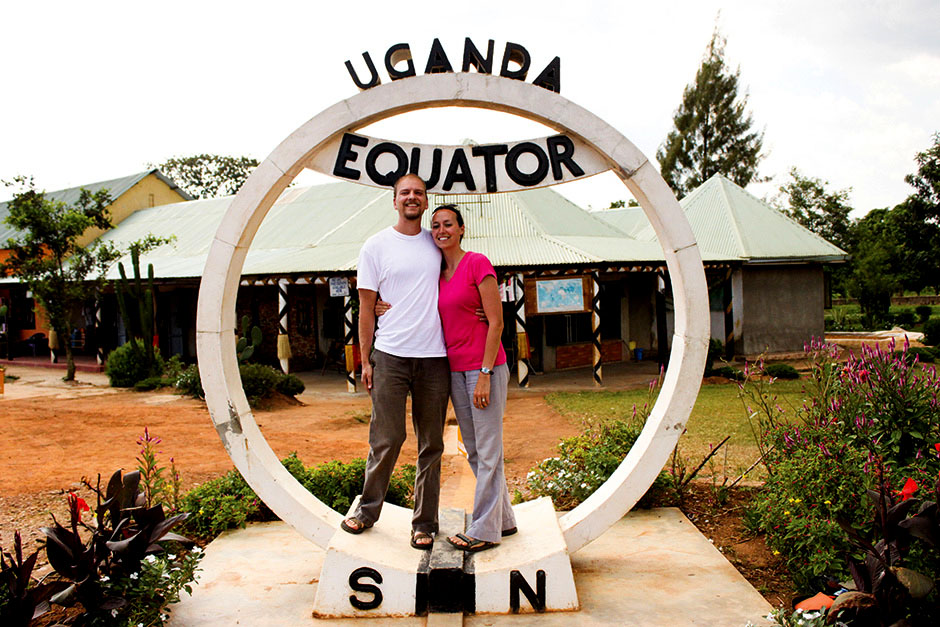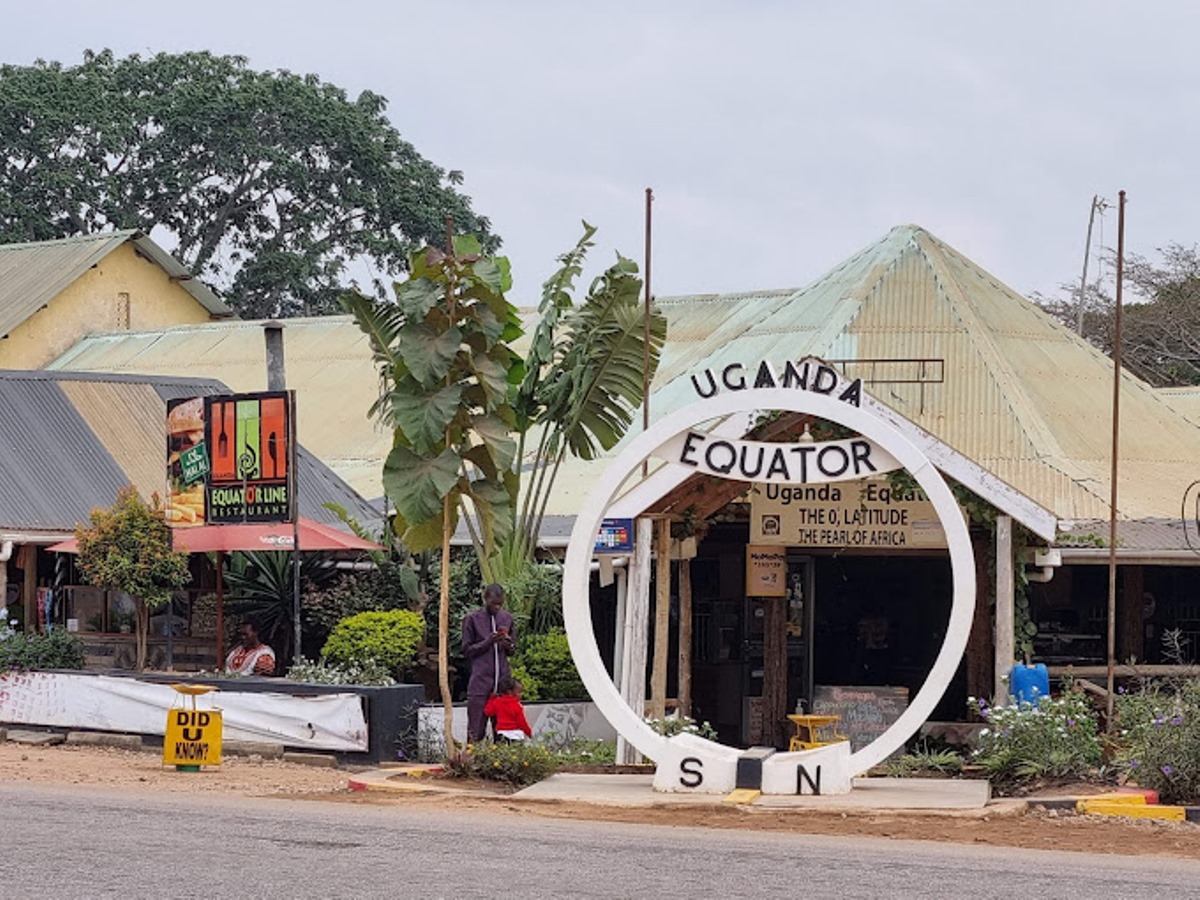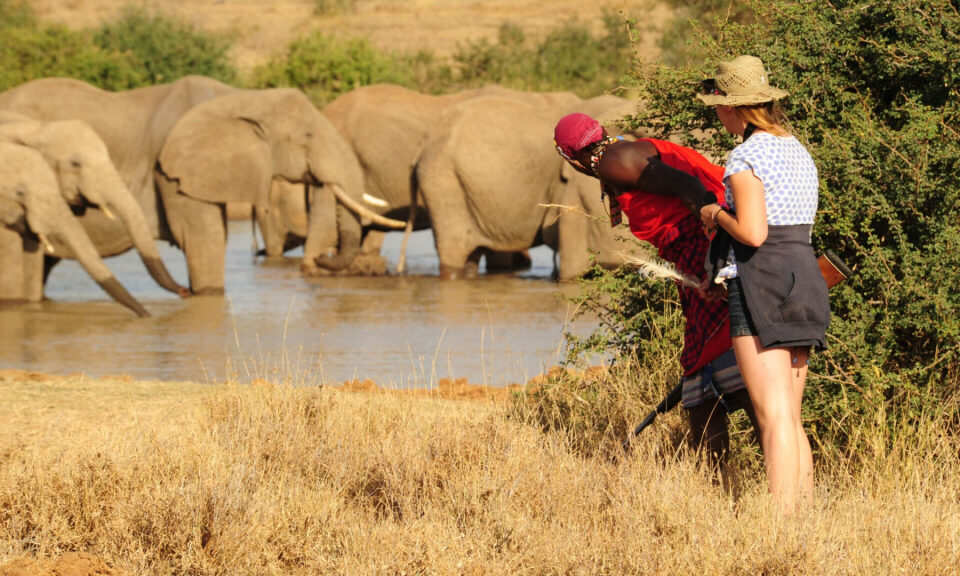- GET IN TOUCH WITH US:
- +256 753518160
- +256 777842166
- info@experiyatourcompany.com

Can I go night game driving in Uganda?
November 10, 2025
Can I visit the Uganda Wildlife Education Centre?
November 10, 2025What’s special about the equator crossing at Kayabwe?

What’s Special About the Equator Crossing at Kayabwe?
Few travel experiences in Uganda capture the imagination quite like standing at the Equator — that invisible line that divides the Earth into two hemispheres. Among the world’s equator crossings, the one at Kayabwe, located along the Kampala–Masaka highway, stands out as one of the most iconic and accessible. It’s more than just a stopover or a photo opportunity; it’s a fascinating geographical landmark where science, culture, and tourism meet. For anyone traveling through central Uganda, the equator crossing at Kayabwe is a must-visit experience that blends education, curiosity, and the unmistakable joy of standing at the center of the world.
The Magic of Standing on the Equator
There’s something almost mystical about the idea of standing with one foot in the Northern Hemisphere and the other in the Southern Hemisphere. At Kayabwe, this becomes a tangible experience. Located about 72 kilometers from Kampala on the road to Masaka, the Equator line is clearly marked by two large white circular monuments — one on each side of the road. Visitors from all over the world stop here to take photos straddling the line, arms stretched wide, symbolizing the connection between the two halves of the Earth.
But beyond the novelty of taking a photo at 0° latitude, Kayabwe offers a deeper experience. It’s one of the few equator crossings where you can witness real scientific demonstrations of how the Earth’s hemispheres behave differently. Using simple tools and local knowledge, guides and demonstrators bring geography and physics to life in ways that are both entertaining and mind-opening.
The Famous Water Experiment
Perhaps the most captivating part of the Equator experience at Kayabwe is the Coriolis effect demonstration — commonly known as the “water experiment.” Guides use three identical funnels mounted on stands, each filled with water and a floating flower or leaf.
One funnel is placed a few meters north of the Equator line, one a few meters south, and one directly on the line itself. When the guide removes the plug, the water starts to drain, and something fascinating happens:
-
In the Northern Hemisphere, the water spins counterclockwise as it drains.
-
In the Southern Hemisphere, it spins clockwise.
-
Directly on the Equator, the water drains straight down, with no spin at all.
This visual demonstration amazes travelers and helps explain the Coriolis effect — the phenomenon caused by Earth’s rotation that influences wind and ocean current patterns. While it’s often simplified for tourists, it still provides an engaging way to understand how the Earth’s rotation affects our planet’s natural systems. Watching the demonstration firsthand gives you a sense of wonder about the hidden forces shaping the world around us.
The Science Behind It
The Coriolis effect itself is a complex but fascinating concept in physics. Because the Earth rotates, objects moving long distances over its surface — such as air currents and ocean flows — are deflected to the right in the Northern Hemisphere and to the left in the Southern Hemisphere. Though the difference in water swirl at small scales (like in the funnels) can be influenced by setup or residual motion, the demonstration at Kayabwe still serves as a symbolic representation of a real scientific principle.
For many visitors, this experiment sparks curiosity about global weather patterns, the trade winds, and even why cyclones spin in opposite directions on either side of the Equator. It’s the perfect blend of education and entertainment — and a reminder that travel can also be deeply enlightening.
A Cultural Stopover Full of Energy
The equator crossing at Kayabwe is not just about science; it’s also a vibrant cultural and social hub. The area is lined with small craft shops, art galleries, and souvenir stands that celebrate Uganda’s creativity and hospitality. Travelers can browse through hand-carved wooden animals, colorful paintings of African wildlife, intricate beadwork, and locally made fabrics. Many of the artisans here are from nearby communities, and their crafts reflect Uganda’s diverse cultural heritage.
You can also find coffee shops and small restaurants serving fresh Ugandan coffee, snacks, and traditional meals — perfect for a rest stop on a journey between Kampala and the southwestern parks like Lake Mburo or Bwindi. Watching travelers from around the world pose for photos, try the experiments, and interact with locals gives the site a lively, cosmopolitan feel that embodies the spirit of exploration.
The Equator’s Climate and Environment
Standing at the Equator gives you a new appreciation for Uganda’s climate, which is shaped by its position at the heart of the tropics. Despite being on the Equator, Uganda’s elevation moderates its temperature, giving it a pleasant, spring-like climate year-round. At Kayabwe, you’ll feel the warmth of the sun but also notice a cooling breeze that makes the stop comfortable and refreshing.
The area around the Equator is lush and green for much of the year, dotted with rolling hills and scattered acacia trees. The surrounding communities engage in small-scale farming, and you might notice roadside stalls selling fresh fruits like pineapples, mangoes, and bananas — a sweet reminder of the fertile land nourished by the equatorial rains.
The Significance of Kayabwe in Ugandan Tourism
Kayabwe’s Equator crossing has become one of Uganda’s most photographed tourist attractions. Nearly every traveler heading to the western national parks — whether for gorilla trekking in Bwindi, game drives in Queen Elizabeth, or birding in Lake Mburo — passes through here. It’s not just a break in the journey; it’s a highlight in itself.
For domestic tourists and school groups, Kayabwe serves as an outdoor classroom. Students visit to learn about geography, physics, and the significance of Uganda’s position on the global map. For international travelers, it’s a symbolic and emotional experience — the realization that they are literally standing at the center of the Earth.
The Story of the Monuments
The iconic white circular monuments at Kayabwe have become symbolic representations of Uganda’s location on the Equator. Each one is inscribed with “Uganda Equator” and the latitude 0°. Many visitors take creative photos — jumping across the line, posing mid-step, or standing with arms outstretched between the hemispheres.
At sunrise and sunset, the shadows here fall evenly north and south, and at certain times of the year (around the equinox), objects cast virtually no shadow at noon — a phenomenon that fascinates both locals and scientists alike. It’s moments like these that remind you of the powerful connection between astronomy, geography, and daily life at the Equator.
Things to Do Around the Equator Crossing
Besides the classic photo and water experiment, there are other engaging things to do at Kayabwe and its surroundings.
You can visit the small art galleries nearby that showcase Ugandan paintings and sculptures inspired by the Equator theme and African wildlife. These galleries often feature local artists, and many pieces are available for purchase — perfect souvenirs that support the community.
Food lovers can enjoy fresh Ugandan coffee at one of the small cafés. Many of these establishments proudly serve coffee grown in the country’s western highlands, giving visitors a taste of Uganda’s world-class beans. Some travelers even use the stop to stretch, refresh, and plan the next leg of their journey deeper into Uganda’s scenic countryside.
Photography enthusiasts find Kayabwe particularly rewarding. The clean white equator signs contrast beautifully with the blue sky, and the crowds of visitors, motorbikes, and colorful craft stalls make for vibrant, story-filled images.
A Symbol of Balance and Connection
Beyond its scientific and touristic appeal, the Equator crossing carries a deeper symbolic meaning. It represents balance — the meeting point between north and south, day and night, and even the connection between people and the planet. Standing there, you feel a sense of unity with travelers from every corner of the world who have stood on that same line before you.
In many ways, the Kayabwe Equator symbolizes Uganda itself: a place of harmony, warmth, and connection. It’s where science meets nature, and where travelers from all backgrounds pause to marvel at the beauty of our shared world.
Practical Tips for Visiting Kayabwe
Visiting the Equator crossing is simple and convenient. It’s located about a 1.5-hour drive from Kampala along the well-maintained Masaka Road. Most travelers visit on their way to or from western Uganda, especially when heading to Lake Mburo, Queen Elizabeth, or Bwindi Impenetrable National Park.
There’s no official entrance fee for stopping at the Equator, though you may want to budget a little for shopping, demonstrations, and refreshments. Mornings and late afternoons are ideal for photography since the light is soft and shadows are less harsh. If you want a quieter experience, visiting on weekdays is best, as weekends tend to attract school trips and local visitors.
Book Your Ugandan Journey with Experiya Tour Company
Whether you’re beginning your journey or heading toward Uganda’s national parks, the Equator crossing at Kayabwe is a must-see stop — and the perfect place to start your adventure with Experiya Tour Company. Known for crafting unforgettable safari experiences, Experiya ensures your journey through Uganda is smooth, informative, and deeply enriching.
Their expert guides can help you make the most of your stop at the Equator, explaining its science, history, and cultural significance while arranging the rest of your itinerary seamlessly. Whether you’re planning gorilla trekking in Bwindi, a wildlife safari in Murchison Falls, or a scenic boat cruise on the Kazinga Channel, Experiya Tour Company offers personalized service and authentic local insight.
Travel with Experiya and discover Uganda’s wonders — from the mystical Equator line at Kayabwe to the wild heart of Africa’s most beautiful landscapes. Every journey becomes more meaningful when it’s guided by expertise, care, and passion.



